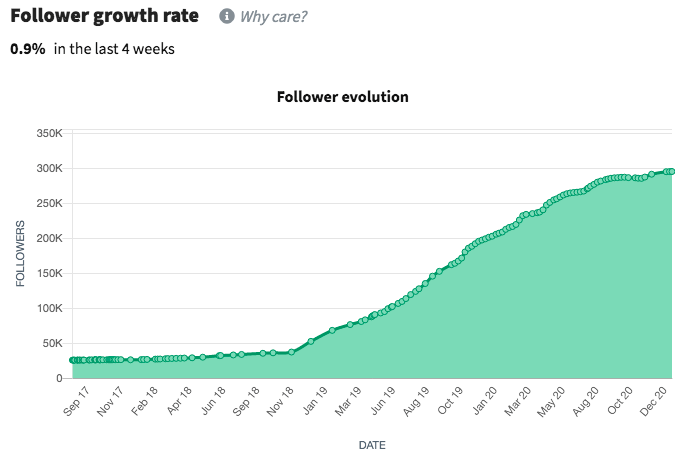When you collaborate together with social media influencers, they are a representative of your brand. So when you are deciding on the person to fill this position, you must know what you need to look into
While an influencer’s personal style and popularity among their followers can be significant elements, they’re certainly not the only things to consider. Brands must consider the following 10 aspects when evaluating influencers to collaborate with.
Content quality and the category
What’s their content about? You’ll need an influencer that posts in the same area as your company. If your company creates kitchen items, for instance, you’ll need to locate an influencer who is a home decor, food, or lifestyle expert. If your brand produces clothing and accessories, then you’ll need to find a fashion blogger, and so on.
Next, how is their quality of content? Are their images crisp and well-constructed? Are they able to post enthralling Instagram stories or edit creative videos on Instagram? To promote your business on social media, an influencer must be able to communicate your brand’s message clearly.
Location
Look up the place of residence of the influencer’s location. This information is typically found in their biography and in the geotags that they apply on their posts. You can also find it on an influencer marketing platform, or simply by looking through their content.
Location is important due to several reasons:
- It could impact the influencer disclosure guidelines applicable for your cooperation. Numerous countries have regulations on this.
- Influencers must be in locations that relate to your marketing campaign. Consider your goals and your target audience, and then think about where you could reach them.
- Costs will vary depending on location. Don’t expect an influencer in NYC to be charged the same amount as someone from Manila.
Aesthetic style
Examine the influencer’s visual style. What are the colors and filters they employ? Find someone who compliments your brand’s aesthetic.
If, for instance, your business sells hippie-style clothes, look for an influencer with a similar style. Their followers are inclined to share a similar fashion sense, which means you’re likely to attract more attention for your company.
Follower count
Follower count, also referred to as reach, provides us with an idea of the number of people who will be likely to view the content of an influencer. It also affects the cost of the influencer’s service.
There are five kinds of influencers according to their followership count:
- Nano influencers, 1-5K followers
- Micro influencers, 5-50K followers
- Medium influencers, 50-100K followers
- Macro influencers, 100K-1M followers
- Mega influencers, 1M+ followers
A greater reach doesn’t mean an influencer is always the best option. Engagement rate is also very crucial, and nano and micro-influencers typically have the highest levels of engagement in the industry.
Nano and some micro-influencers usually work with you for free products. In the upper reaches of the micro-tier, influencers will begin asking for fees. And from the middle tier up, influencers usually have managers, who could increase fees even more.
Follower growth
Analyze how an influencer has attracted followers. The organic growth of influencers is slow and steady. If you have well-crafted, targeted content, influencers will gain increasing numbers of followers over time.
However, if you find an influencer who has suddenly gained an abundance of followers, it could be because they have bought fake followers. First, check if they held the giveaway or went viral at that time. If not, the growth could be fake.
Growth analysis from influencer marketing platform Heepsy. The steady but slow upward trend suggests that it’s organic.
Followers to following ratio
Check the number of followers an influencer has against the number of accounts they follow. If this number is similar to one, it could indicate that the influencer is employing the follow/unfollow method.
This is when an influencer follows random accounts, waits for them to follow back, then removes them from their followers. These new followers don’t really care about the influencer’s content; they’re just trying to be polite.
Engagement rate
The engagement rate shows how interested the followers are in the content of an influencer. The more engaged they are, the more likely they will interact with it.
The ways you can interact with content differ across social networks. Each social network, therefore, has its own benchmarks for engagement averages. So when comparing influencers, only compare them with their counterparts. In other words, don’t look at Twitch streamers‘ engagement rates compared to the benchmarks for TikTok creators, and so on.

As we mentioned above, engagement also varies based on the number of followers. When the number of followers increases, engagement tends to decrease. This is why it’s crucial to evaluate an influencer’s performance against the averages for their follower segment.
Audience demographics
When you’re vetting an influencer’s profile, look into their followers as well. Check to see if the target audience you’ve defined is compatible with the influencer’s audience. Examine demographics like gender, age, locale, language and even interests.
You shouldn’t just assume the audience will match the influencer on demographics. For example, in the chart above, we see the audience location breakdown for an American influencer. We may have assumed that the majority of their audience would also be located in the US, but in reality, only under a third is based there.
Audience authenticity
Also, take a look at the audience’s authenticity. Influencers are able to buy fake followers, and you shouldn’t invest your marketing budget in promoting your brand to these bots.

An authenticity analysis from influencer software Heepsy.
An influencer marketing platform can efficiently analyze this for you. But if you’re not using this kind of software, scan through the influencer’s audience on social media.
You can usually tell a bot from some of its warning signs: strange usernames, no profile info or picture, lack of content, and unnatural language.
Previous collaborations
Last, take an overview of other brands the influencer has partnered with. What kind of content did they create and share? Did their content receive a lot of likes, comments, and other engagements?
Examining this information can give you an idea of the way their content will benefit your company. It is also a good idea to check if the influencer has worked with your competitor so you can potentially avoid working with them.
Conclusion
If you are looking to identify social media influencers and choose the most appropriate one for your campaign, these 10 points are essential in your review. An accurate analysis of influencers is an essential element in any effective influencer marketing strategy. So, take your time to conduct it properly.
Also Know More About – pikashow v60 apk download






